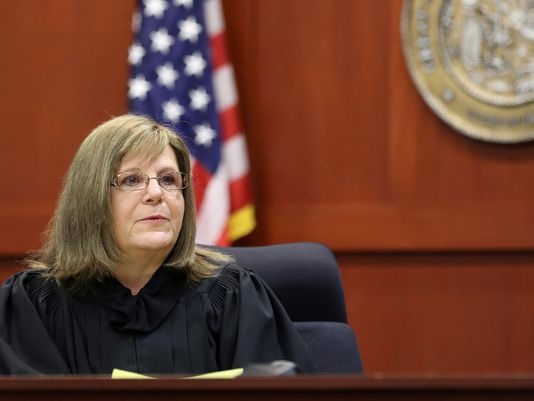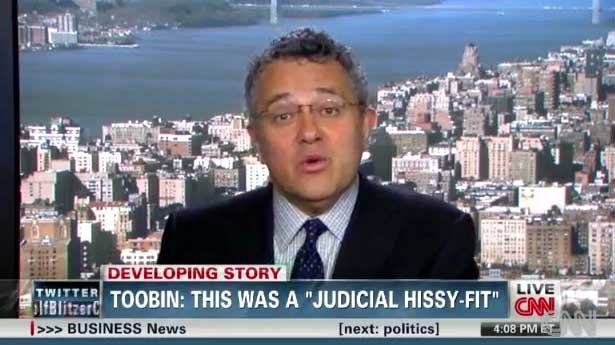White Jury, White Judge, White Media Hear White Prosecutors Rest Case in White Man's (Zimmerman) Trial
/In video, mother of murdered Black teen testifies in racist suspect Zimmerman's trial. Expect racism in the Zimmerman trial. If there is justice then pleasantly surprised. The necessary illusion of justice in criminal trials involving non-whites usually includes non-white lawyers, jurors, judges, courtroom clerks as part of the show. Not so with the Zimmerman trial - it is an old skool whitewash; complete with a white judge, white prosecutors, white defense attorneys and a mostly all white jury (5 out of 6 are white). But there are a few token folks propped up in the white media coverage of the so-called trial.
White people are playing a survival game with non-white people, engaging in behaviors—in economics, education, entertainment, labor, law, politics, religion, sex and more—in order for them to survive on the planet, by any means necessary. Created for their survival, the operating system of white supremacy controls everything non-white people have or need. How will you react to it?
In photo, Prosecutor Bernie de la Rionda (R), demonstrates a possible scenario while questioning witness Sanford police officer Chris Serino. From [HERE] Prosecutors wrapped their case against George Zimmerman on Friday afternoon after the mother and brother of teenager Trayvon Martin testified Friday that they believed the screams on a 911 call seconds before his death were his, not those of Zimmerman.
"I heard my son screaming," said Sybrina Fulton, who listened to the 911 tape of the final moments of his life on Feb. 26, 2012. Fulton said she had to listen to the tape only once to know it was her 17-year-old son. She also testified that she didn't think Trayvon was responsible for his own death.
 In photo, Judge Nelson
In photo, Judge Nelson
The defense began with Zimmerman's mother, Gladys Zimmerman, briefly testifying that it was her son screaming for help on the phone. "That's George's voice,'' she said.
Her testimony came after medical examiner Shiping Bao, who autopsied Trayvon's body a day after his death, said Trayvon died from a 9mm gunshot wound to the heart. "My belief he was still alive, he was still in pain, he was still suffering'' in the moments after he was shot.
He also said he believed that based on his experience Travyon was alive for between one and 10 minutes after he was shot by the weapon, which had "loose contact" with his body.

After Bao's testimony, Zimmerman defense attorney Mark O'Mara attempted to have the case thrown out for lack of evidence and his client acquitted. "There's enormous evidence that my client acted in self-defense,'' O'Mara said. "There is no other reasonable hypothesis."
O'Mara said prosecutors failed to prove that Zimmerman acted in ill will, spite or hatred, which is needed to convict someone of second-degree murder. "I would suggestthere's no direct evidence to support second-degree murder," O'Mara said, adding that the state failed to provide enough circumstantial evidence to prove their case. He referenced multiple conflicting witnesses that by themselves, he said, created reasonable doubt.
Judge Debra Nelson denied the acquittal bid.
Earlier Friday, several autopsy photos were shown of Trayvon's body including a close-up of his left hand, which had a cut with blood still visible. The jury stared at the photos that showed Trayvon's clenched hands, a bent leg and a close-up of his face, his eyes and lips closed. The teen's mother was not in the courtroom when the photos were shown but Trayvon's father sat somberly looking at the pictures.
Bao said abrasions on two of Trayvon's fingers could have been caused before, after or during the struggle with Zimmerman, and could have come from punching someone, scraping against concrete or from falling after he was shot.
That information means Zimmerman's versions of events — that Trayvon punched him and banged Zimmerman's head into a concrete sidewalk — could be supported by the teen's autopsy.
O'Mara pressed Sybrina Fulton about when she heard the tape and whether she hoped the voice was her son's so she would know the teen hadn't caused his own death. "I didn't hope for anything," Fulton said. "I simply listened to the tape."
Trayvon's older brother, Jahvaris, a 22-year-old senior at Florida International University, also testified that after listening to the 911 tape 10 to 15 times, he also believed the screams were made by his brother.
The Fultons' testimony could be key to help jurors determine who was the aggressor in the case against Zimmerman, 29, on trial for second-degree murder for Trayvon's death. Zimmerman, the neighborhood watch volunteer who has pleaded not guilty, has said that he acted in self-defense after he was attacked.
State attorneys, who have called three dozen witnesses, have presented a theory that points to Zimmerman's motivation: frustrated by neighborhood burglaries, he wrongly profiled an innocent 17-year-old as a criminal, followed him, then shot and killed him after a struggle.
Despite the prosecution's efforts, several legal experts say the case against Zimmerman isn't strong and does not overcome the burden of reasonable doubt.
"There are significant weaknesses in the state's case — most importantly conflicting eyewitness accounts which themselves create reasonable doubt as to what happened that night," said Elizabeth Parker, a former prosecutor who is now a criminal defense attorney in Palm Beach, Fla.
Trayvon's death and the speculation that Zimmerman, who is Hispanic, profiled, followed and murdered him sparked protests around the country last year. Zimmerman, who faces life in prison if convicted, has maintained that race did not factor into his actions.
Benjamin Crump, the attorney for Trayvon's family, has maintained that prosecutors have enough to convict Zimmerman. "There is overwhelming evidence that George Zimmerman murdered Trayvon Martin," he has said.
Eyewitness accounts concern Parker however, particularly the testimony from residents who lived nearby the shooting scene who told largely different stories.
Jonathan Good said he saw Trayvon on top of and striking Zimmerman moments before the teen was shot.
Selma Mora, who lived a couple of houses down from Good, said a person straddling on top of another person told her to call police. Minutes later, the same person who was on top, Zimmerman, was on his feet after a gunshot, Mora said.
Meanwhile, two key witnesses, Sanford Police Officer Christopher Serino, the lead investigator on the case, and Rachel Jeantel, a young woman who was on the phone with Trayvon moments before he died, did not significantly help the state, Parker said.
Serino agreed with prosecutors that Zimmerman may have been profiling Trayvon, who was black, but also said he believed Zimmerman was telling the truth when he said he was attacked by the teen he fatally shot. The judge later told the jury to disregard that Serino believed Zimmerman.
"Serino's testimony was frankly terrible for the state," said Randy Reep, a Jacksonville defense attorney. "The instruction from the judge to ignore his views of Zimmerman's honesty was the correct thing for the judge to do, but un-ringing that bell is impossible to do."
The investigator also told the jury no physical evidence or witness statements contradicted Zimmerman's claim of self-defense and that the medical examiner's report supported Zimmerman's version of events.
Meanwhile, Jeantel, 19, told jurors that Zimmerman stared at and then followed Trayvon who tried several times to run away. Trayvon was out of breath when he told Jeantel he had lost the man.
"It was kind of strange that a person kept watching and following," she said. "It was like being stalked."
Later, Trayvon told Jeantel the man was back and behind him, she said. Within seconds, she said she heard a "bump" and Trayvon saying "get off." The phone hung up and there was no answer when she called back.
However, Jeantel and defense attorney Don West sparred during a seven-hour cross-examination that was often contentious. Jeantel admitted during testimony that she had lied twice: She said she told Trayvon's family she was 16 when she was 18. She also said she lied about going to a hospital instead of Trayvon's funeral because she didn't want to see his body.
Jeantel also said when she was first interviewed by a state attorney, it was at Trayvon's mother's house. Sybrina Fulton, Trayvon's mother, was crying and Jeantel didn't want to upset her further, the teen said.
"Rachel Jeantel's testimony was crucial to the state's case," Parker said. "She was Trayvon's voice from the grave."
But Parker thought the high school senior came across as aggressive and hostile and that her version of the truth seemed to lack credibility.
The three most troubling issues with Jeantel were that her accounts regarding what she heard were not consistent, her testimony appeared to be inappropriately influenced by the state, and she didn't appear to take testifying seriously, Parker said.
Daryl Parks, another attorney for the family of Trayvon, said his clients were proud of Jeantel and that the teen stuck to what she heard, that Zimmerman was the aggressor.
"She is not a lawyer," Parks said. "She did her very best."
Other state witnesses testified that Trayvon's fingerprints and DNA were not found on the gun but his DNA was found on the right cuff of Zimmerman's jacket. They also said Zimmerman's DNA was not found under Trayvon's fingernails but it was found on a shirt Trayvon wore under his hoodie.
The jury also learned about Zimmerman's rejection letter from a Virginia police department, his course work for a class that discussed stand-your-ground and self-defense laws, and his application to do a police ride-along.
However, legal experts say prosecutors have not proven Zimmerman acted "imminently dangerous" and demonstrated a "depraved mind without regard for human life" — Florida's definition of second-degree murder.
"What they seem to have proved, instead, is a thoughtless, careless encounter that may have spiraled out of control," said Jules Epstein, a Widener University law professor, adding that the prosecution seemed to take an extreme view of the events.






































































































































































































































































